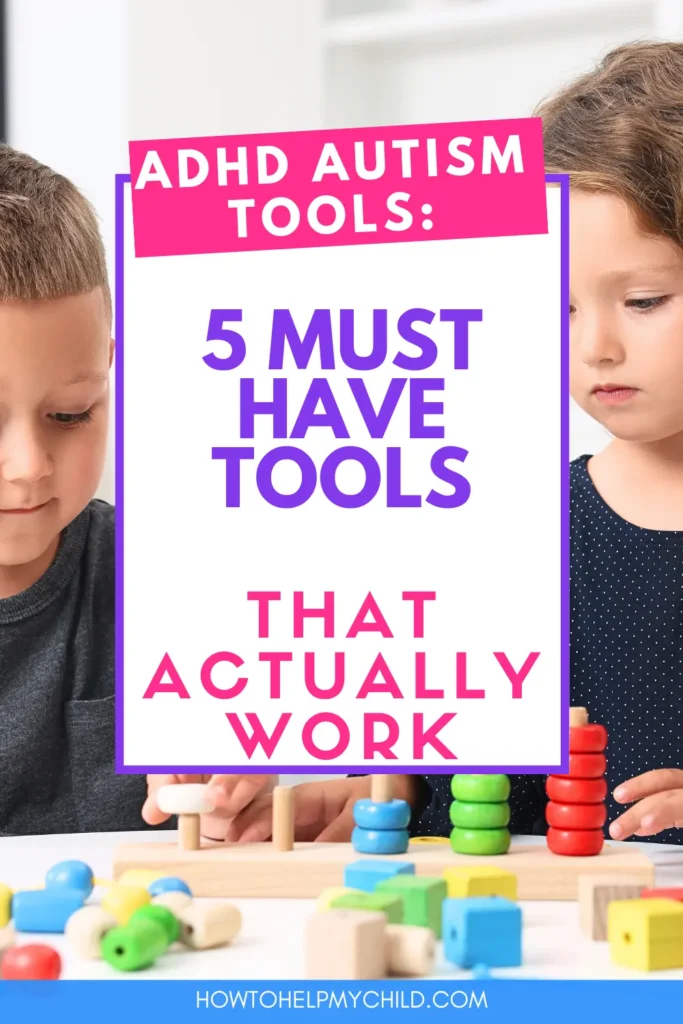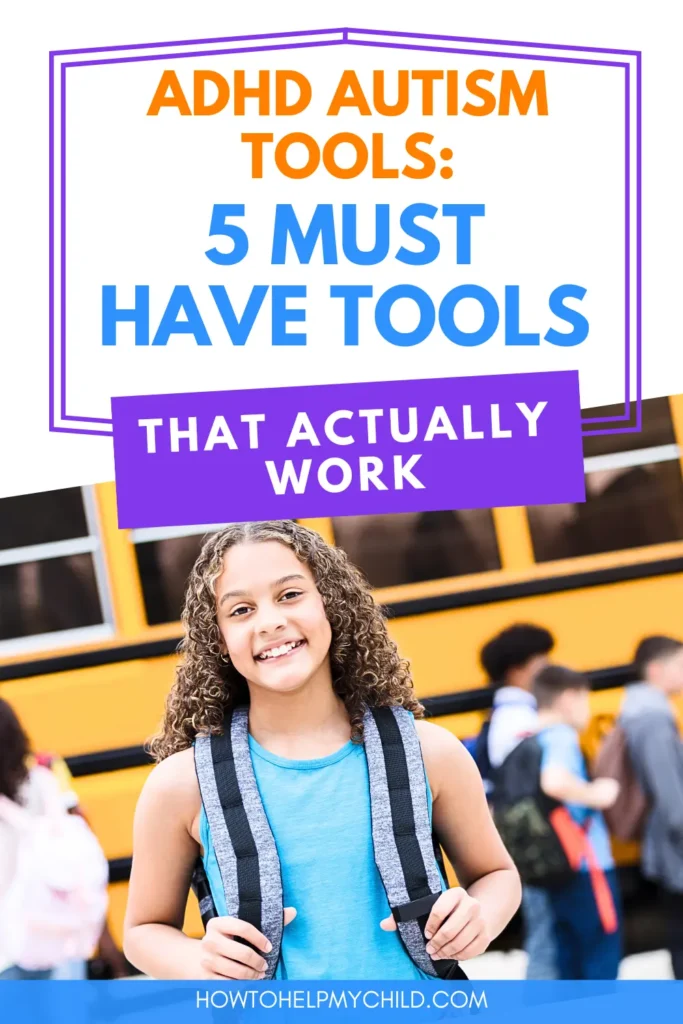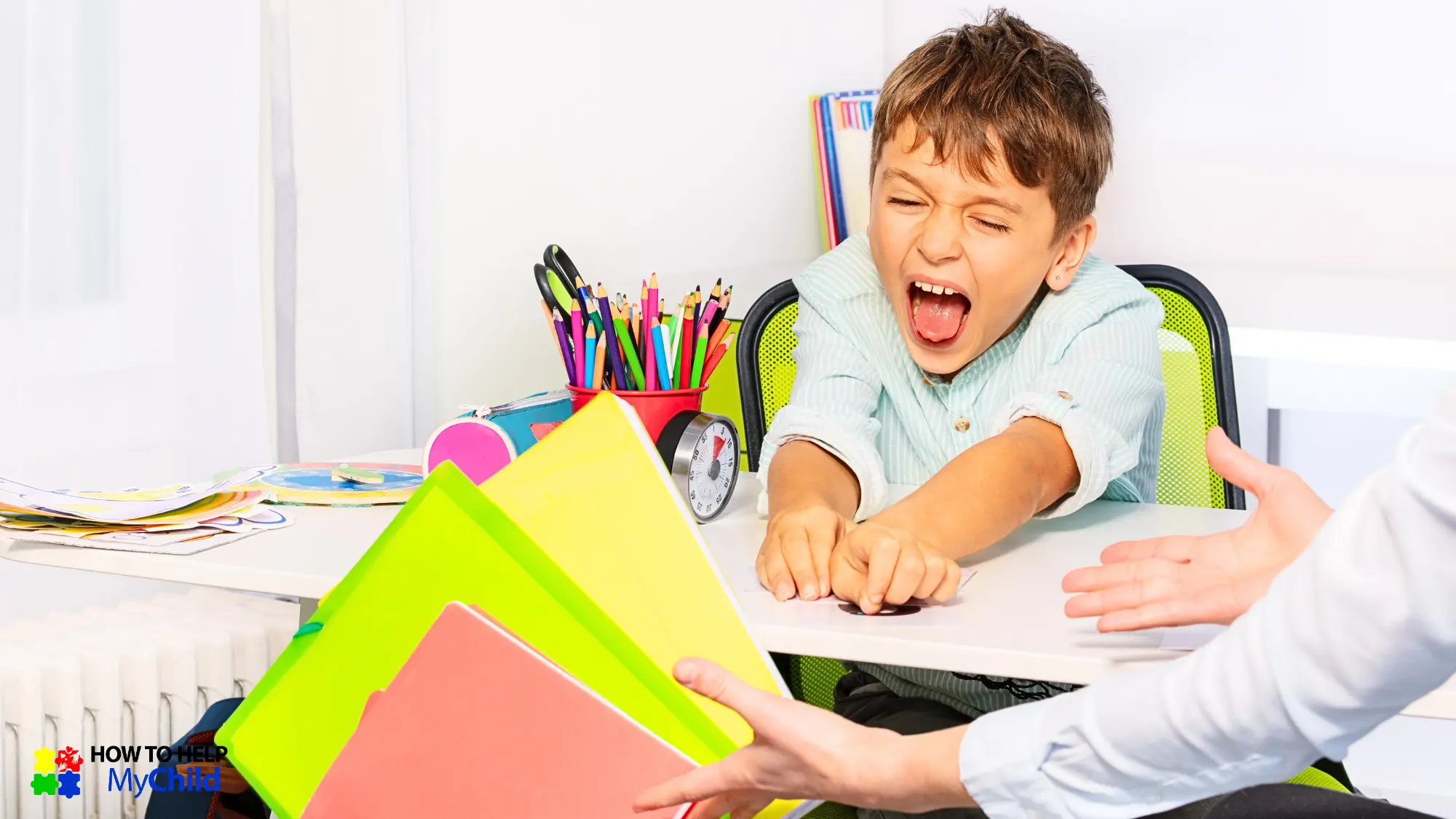ADHD Autism Tools: 5 Must Have Tools That Actually Work
Are you struggling to maintain routines for your child with ADHD or autism?
Do daily transitions feel like a battle?
You’re not alone.
Many families face constant overwhelm, anxiety, and meltdowns.
Not because they aren’t trying hard enough, but because they’re missing the right structure.
That’s where ADHD autism tools come in.
I’ve helped many parents shift from chaos to calm using simple, practical tools that actually work – even on the toughest days.
Let’s look at five of the most effective ADHD autism tools to support your child’s independence, reduce meltdowns, and bring more peace to your day.
Why Structure and the Right ADHD Autism Tools Matter

Before we dive into the tools, here’s a bit of learning to ground us.
Our children with autism and ADHD often struggle with executive functioning – the brain’s ability to plan, organize, and follow through.
They also face challenges with emotional regulation and processing transitions.
Sudden transitions, unclear expectations, or sensory overload can send their nervous system into overdrive and leads to anxiety and emotional dysregulation.
That means your neurodivergent child will benefit from:
- Predictable routines that reduce anxiety
- Visual and concrete cues that reduce cognitive load
- Clear steps that make tasks feel doable, not overwhelming
When we give our autistic and ADHD kids the structure their nervous system craves, they feel safer, more confident, and more in control.
That’s what helps reduce meltdowns.
To reduce these challenges, creating calm at home is essential.
Having predictable supports that are visual, tactile, or time-based, creates a sense of safety for our kids.
When your child with autism and ADHD can see what’s coming next, understand the steps, and feel capable of doing them, their stress drops. And so do the meltdowns.
These five ADHD autism tools are some of my favorites because they’re easy to set up, adaptable to your child’s needs, and they work.
📺 Prefer to watch instead? Check out the video guide:
Your Toolkit for Success
Let’s explore five essential ADHD Autism Tools:
- Visual Schedules
- Timers and Alarms
- Checklists and To-Do Lists
- Color-Coded Calendars
- Routine Cards and Charts
These ADHD Autism Tools will help you create a daily schedule that supports your child’s unique needs.
1. Visual Schedules for ADHD & Autism: A Roadmap for the Day

Visual schedules aren’t just cute charts on the wall.
They’re one of the most powerful ADHD autism tools you can use to reduce anxiety, increase independence, and make daily life more predictable.
For our children with ADHD or autism, the world often feels chaotic and fast moving.
Their brains are working overtime to process information, manage transitions, and remember what comes next, and that can be exhausting.
It is this mental fatigue that often shows up as resistance, overwhelm, or full-blown meltdowns.
A visual schedule helps lift that load.
By showing what’s happening now and what’s coming next, it gives your child the structure their nervous system craves.
No surprises.
No guesswork.
Just a clear, visual plan they can follow at their own pace.
Visual schedules support:
- Working memory challenges – your child doesn’t have to hold everything in their head
- Transition struggles – they can see the shift before it happens
- Emotional regulation – predictability makes your child’s world feel safer
Instead of repeating instructions 10 times, or bracing yourself for a power struggle, you can gently point to the chart.
“Check what’s next.”
That tiny moment of independence helps your child feel capable, in control, and calm.
Freebie!

Unsure if it’s a Tantrum or Meltdown?
This Guide is for YOU!
Created for moms raising kids with Autism & ADHD, this guide helps you move from confusion & stress to calm & confidence – right when BIG emotions hit. Say goodbye to second guessing & hello to REAL SUPPORT that actually helps.
Creating a Morning Routine Visual
Start with photos or icons for each step:
- Wake up
- Toilet
- Breakfast
- Get dressed
- Pack bag
Post it where your child gets ready.
Let them move each card to a done column – that movement builds motivation, focus and success in completing a task.
Remember when creating visual schedules for autism:
- Involve your child in the creation process.
- Use clear, simple images or icons.
- Laminate the schedule for durability.
💛 From a Mom in Our Community:
“Using a morning chart with pictures stopped the daily tears. Ned just checks the next step and moves on. I don’t even have to ask or nag.”
— Lisa, mom of 6 year old Ned with autism
2. Timers and Alarms: Mastering Time Management
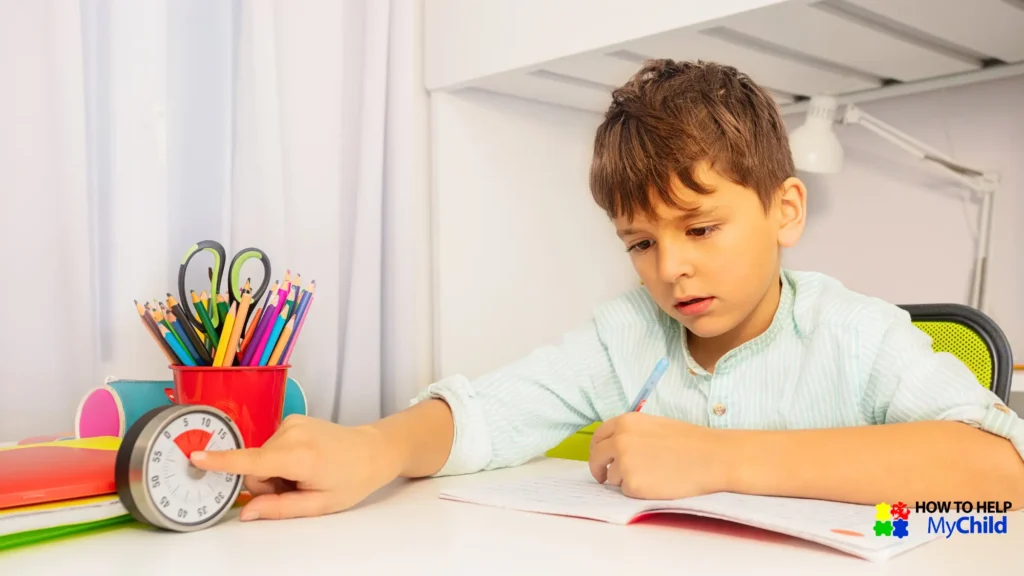
Your child with ADHD or autism may often struggle with time blindness.
This is the ability to sense how much time has passed or how long something will take.
Time blindness makes transitions hard, especially from preferred to non-preferred activities.
Timers give time a visual or auditory structure, helping our kids prepare emotionally for what’s next.
They reduce the “shock” of a sudden change, a common meltdown trigger.
One of the best ways to help with time blindness is a visual timer.
It shows time disappearing in real time – so your child can see how much is left.
That visual cue makes transitions easier, reduces surprises, and takes the pressure off you to keep reminding.

You’re Not Alone – Find Your Support System Here!
Parenting a child with autism or ADHD can feel isolating—endless meltdowns, sleepless nights, & feeling like no one understands But you don’t have to do this alone.
❣️Get real-life strategies to handle daily challenges.
❣️Connect with moms who get it—no judgment, just support.
❣️Share your wins (and struggles)
❣️Find encouragement, advice, & a place to vent when you need it most.
👉Join our private Facebook group today and step into a community that truly understands!
Use this ADHD autism tool to:
- Ease transitions between tasks
- Support focus, especially for homework or morning routines
- Create boundaries around screen time without conflict
Try a visual timer for young kids, or apps for tweens.
Set a 5-minute warning and then a final switch time.
Pair the timer with a calming next step.
Perhaps a snack or a movement break, to make the transition feel safer.
💡TIP
Regular use of timers and alarms, help your child to learn and anticipate transitions. They trust that the day has a rhythm they can count on without the surprises that trigger their meltdowns.
Timers and alarms allocate specific timeframes for tasks.
They help our kids understand that perception of time and are essential for helping autistic and ADHD kids stay on track.
The Power of Timers: Enhancing Focus and Reducing Battles
Timers can help children with ADHD focus on tasks, such as homework. This ADHD daily routine tool reduces the struggle of constant reminders and nagging.
With regular practice using a timer, your child will manage tasks more independently.
Types of Timers: Finding the Right Fit
You can use different types of timers:
- Kitchen timers
- Visual timers
- Apps
- Physical alarm clocks
It is best to experiment and find the type of timer that works best for your child.
Real-Life Example: Homework Time
Set a timer for 15 minutes of reading.
Use the timer to remind your child how much time is left.
Encourage them to stay on task.
After 15 minutes, they are done and can move on to the next activity.
3. Checklists & To-Do Lists: Turning Chaos into Confidence

What feels like simple instructions to us, can be incredibly complex for our neurodivergent kids.
ADHD affects executive function, the part of the brain that organizes and sequences tasks.
Autism can make verbal instructions harder to process quickly.
Enter the humble checklist: an ADHD autism tool that builds clarity, reduces overwhelm, and celebrates completion.
Checklists and to do lists organize tasks and routines, bringing a sense of order to the day. You could make sure your neurodiverse child’s teacher has a checklist of accommodations to help them!
Whether it’s for brushing teeth or packing a school bag, a checklist offers your child something concrete they can follow, and finish.
Why Checklists Work: Dopamine Boost and Organization
Why this tool ADHD autism tool is so effective:
- Creates a sense of control and reduces “what next?” panic
- Offers dopamine hits with each ticked box
- Helps you say less while supporting more
Use a laminated list and dry erase marker, or let older kids use a task app. Keep it short and specific.
Add visuals for younger children or non-readers.
Beyond the Basics: Adapting Checklists for Different Needs
Adapt checklists for different needs:
- Create picture-based checklists for younger children.
- Break down complex tasks into smaller, more manageable steps.
- Make checklists for any task.
💛 From a Mom in Our Community:
“When Mason checks off each step with his whiteboard pen, he lights up. The list keeps him moving.”
— Sarah, mum of 8 year old Mason with ADHD and autism
4. Color-Coded Calendars for ADHD & Autism: Visualizing the Week Ahead

Planning is a big source of anxiety for neurodivergent kids.
Color-coded calendars are an incredibly effective ADHD autism tool because they allow your child to visually organize and predict the week, without needing to process lots of text.
The Power of Color: Quick and Easy Identification
Using different colors for different activities allows our children to quickly identify what’s coming up. For example:
- School = green
- Gym = yellow
- Swimming = blue
- Visit to Dad’s = red
With these colors, your child can plan, visualize, and differentiate between activities.
No stress and no meltdowns!
Calendar Options: Wall Calendars, Planners, and Apps
Consider these formats for color-coded calendars:
- Wall calendar
- Color-coded wall planner
- App
- Magnetic weekly calendar on the fridge
- Shared digital calendar for teens
Choose the format that works best for your family.
💡TIP
Use planners proactively, and teach your child how to use it too. Try saying, “I see swimming is tomorrow – what do we need to pack?” That one simple question builds self-direction, reduces last-minute stress, and gives your child a small moment of success they can feel proud of.
5. Routine Cards and Charts: Breaking Down Daily Tasks
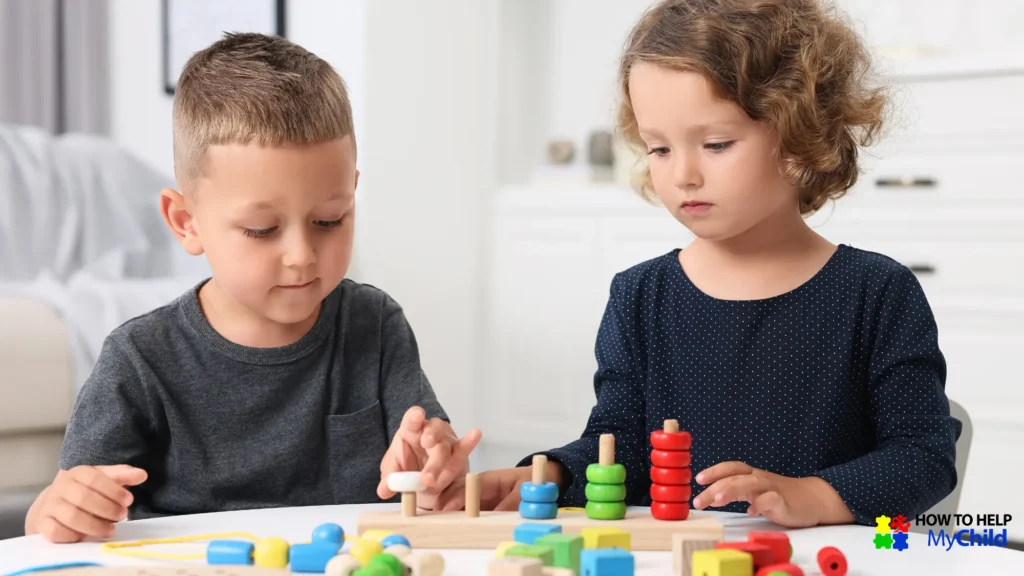
Routine cards and charts provide detailed visual guides for completing specific tasks.
They turn complex tasks into simple steps.
Think of them as mini checklists with visuals for specific routines – brushing teeth, bedtime, going to the toilet.
This ADHD autism tool is ideal for teaching life skills while reducing constant prompting and nagging.
They empower your child to move through their day with greater independence, and fewer emotional flare ups.
Breaking Down Tasks: Making Independence Attainable
Routine cards break down tasks into manageable steps.
They promote independence and reduces nagging.
Take brushing teeth for example:
- Get the toothbrush
- Get the toothpaste
- Take the cap off the toothpaste
- Put toothpaste on the toothbrush
- Run it under water
- Turn the water off
- Brush your teeth
- Rinse your toothbrush
- Rinse your mouth
- Wash your face
- Put your toothbrush away
By breaking down these steps, your child will gain independence.
Creating Routine Cards: Tips for Detail and Clarity
- Use clear, concise language and visuals for each step.
- Involve your child in the creation of the routine cards.
- Brainstorm the order of steps.
- Laminate the cards for durability.
Beyond the Basics: Adapting Routine Cards for Different Skills
Start with simple routines and gradually increase complexity.
Celebrate successes and provide positive reinforcement.
Your child might need routine cards for weeks, months, or forever.
Why Routine Cards and Routines help:
- Minimizes resistance because your child feels capable
- Reduces overwhelm by showing, not telling
- Builds task mastery one step at a time
Final Thoughts: ADHD Autism Tools That Grow With Your Child
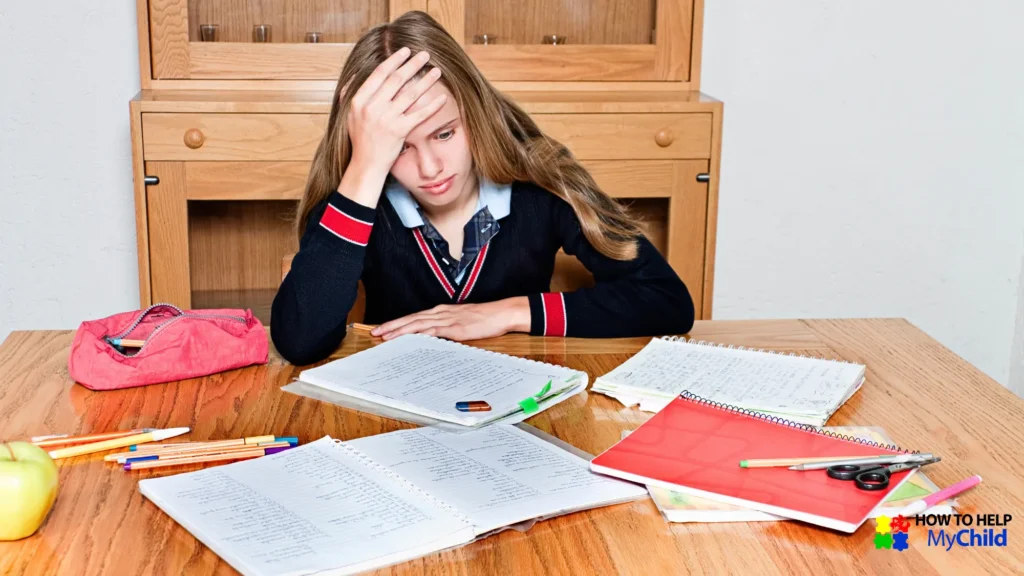
These five ADHD autism tools aren’t just about keeping the peace.
They’re about helping your child feel more confident, capable, and calm – one routine at a time.
With time, these tools reduce your need to micromanage.
They lower the stress that leads to meltdowns.
And they help your child build the emotional and executive function skills they need to thrive.
You can do this!
Take care,
Sue
🍃💖🍃

Love to pin? Share the love on Pinterest …
